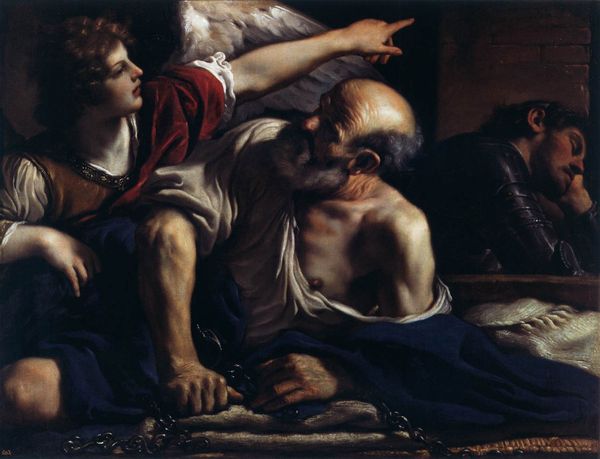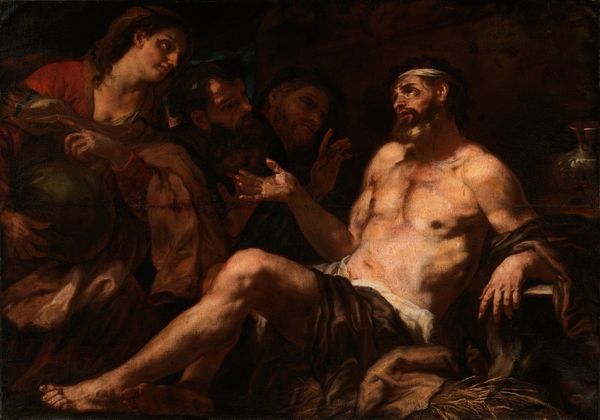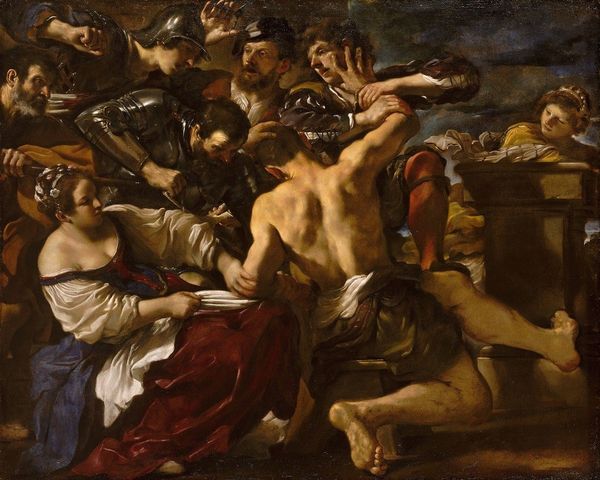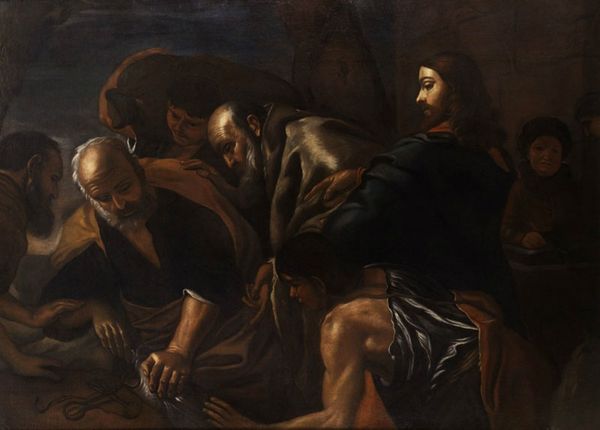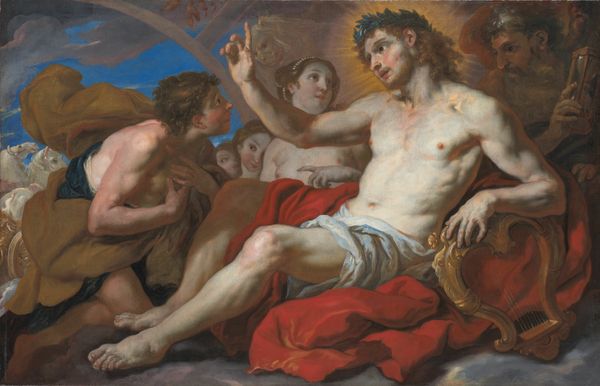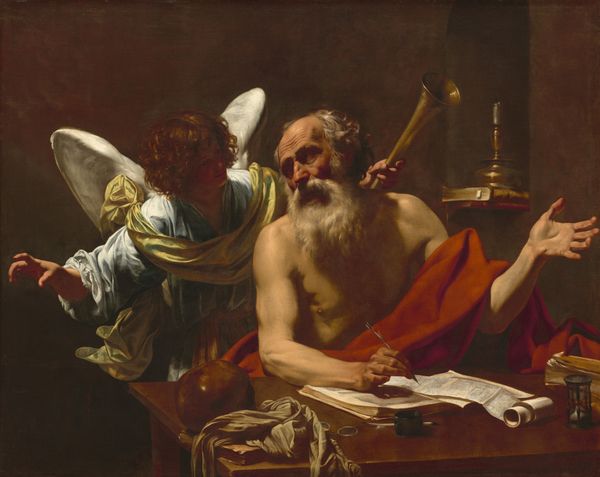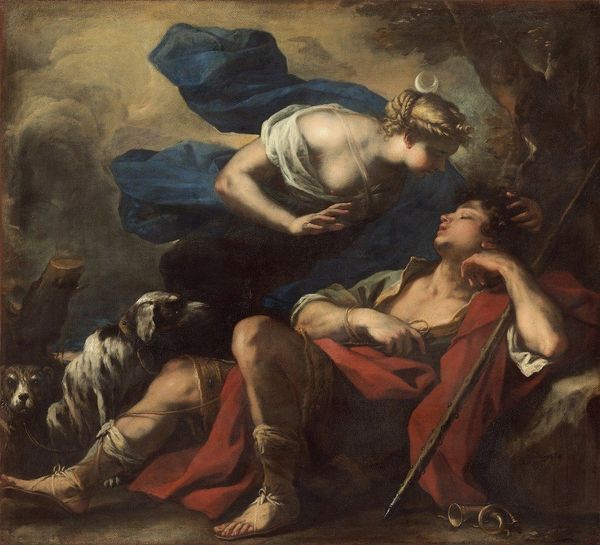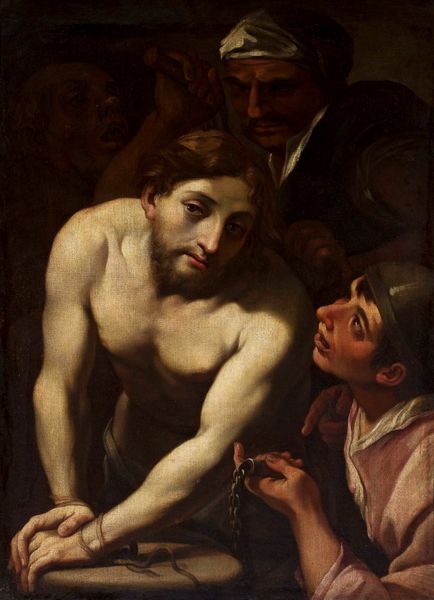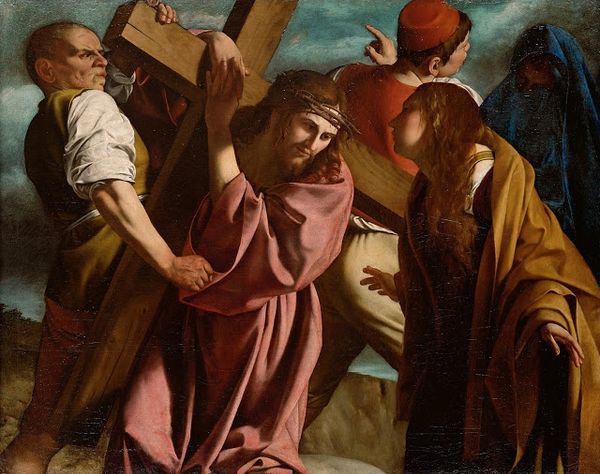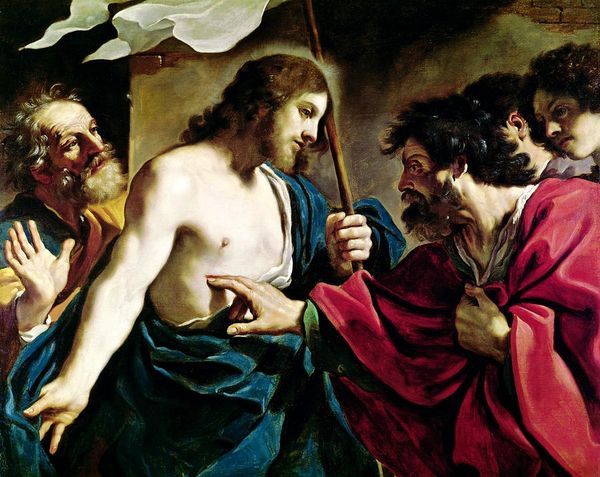
painting, oil-paint
#
allegory
#
baroque
#
painting
#
oil-paint
#
figuration
#
oil painting
#
history-painting
#
italian-renaissance
Copyright: Public Domain: Artvee
Editor: This is Guercino’s "Saint Matthew and the Angel," painted in 1622 with oil on canvas. There’s something about the grittiness of Saint Matthew's face contrasted with the ethereal quality of the angel that I find captivating. How do you interpret this work, especially considering the time it was created? Curator: It's fascinating to consider this piece within the context of the Counter-Reformation. Guercino's dramatic chiaroscuro—the stark contrast between light and shadow—wasn't just a stylistic choice. It was a deliberate tactic used by the Catholic Church to evoke intense emotional responses in the viewer, reinforcing religious dogma against the rising tide of Protestantism. How does the angel's youthful beauty, contrasted against Matthew's aged and world-worn appearance, speak to the social hierarchies embedded in religious narratives? Editor: It makes you wonder who these stories are truly meant to serve, doesn't it? Curator: Exactly! This piece presents an opportunity to question whose voices are amplified and whose are silenced. Notice the physicality of Saint Matthew—his bare chest, the weight of his body—juxtaposed against the almost weightless, guiding hand of the angel. Does this not represent the tension between divine inspiration and human labor, and the power dynamics inherent in their relationship? Consider too, how artists during this time may have faced the constraints of their patron, whether in the clergy or a noble family. What constraints or unspoken agreements may have been present for Guercino? Editor: So the artist's choices become a form of negotiation between faith, patronage, and perhaps even subtle social commentary. Curator: Precisely. Looking at it through that lens, even a seemingly straightforward religious scene can reveal layers of cultural and political significance, relevant even today in conversations about power, representation, and narrative control. Editor: It makes me appreciate how much more there is to discover in art when we look at the historical and social implications of artistic choices. Curator: Indeed. Art serves not only as a visual representation, but as a reflection of societal structures.
Comments
No comments
Be the first to comment and join the conversation on the ultimate creative platform.
